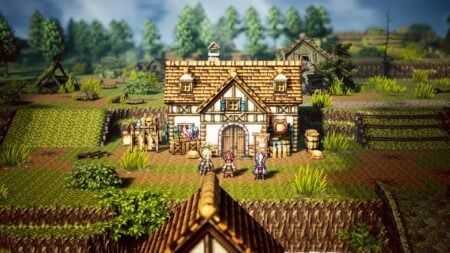Skip To...
Metroidvania is one of the genres I feel has evolved the most in the past decade. Think about it: in the past, every game was stuck in gloomy settings with horrible monsters to fight. But now, you see some that include world-famous cartoons, divers, and even anime-themed ones. However, one of the most unique I’ve played is Bō: Path of the Teal Lotus. Beyond the mysticism behind its art style and the beautiful representation of Japanese folklore in each area, the gameplay gimmicks are extremely engaging. While challenging, they never become too punishing, thus allowing new and veteran players to enjoy this journey equally.
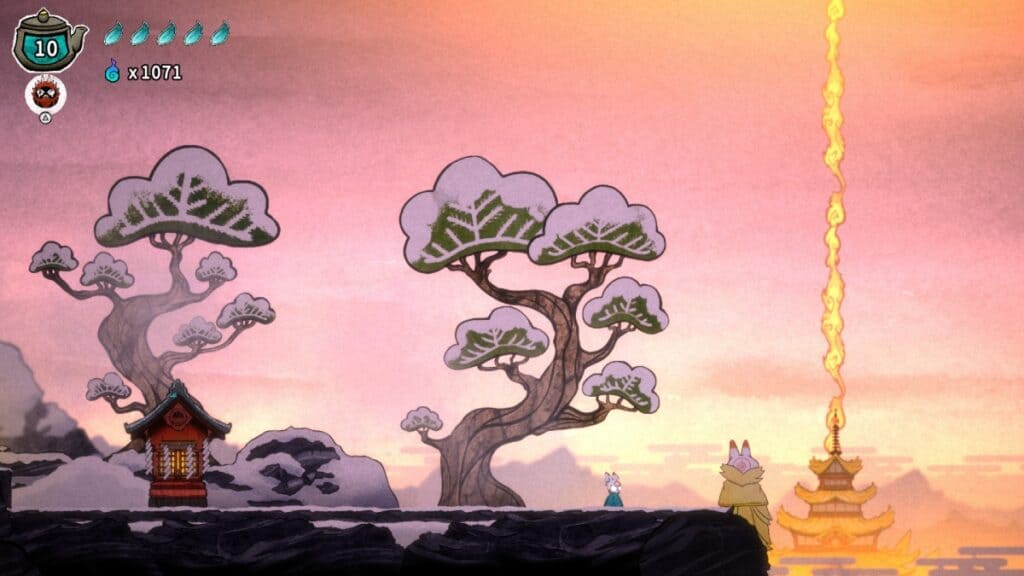
At first glance, Bō: Path of the Teal Lotus seems like a lighthearted adventure with no danger whatsoever. How wrong I was. Path of the Teal Lotus doesn’t pull its punches. Despite the colorful stages, cartoonish characters, and soothing melodies, it is one of the most challenging Metroidvanias I’ve played. Yet, one thing I loved is that it wasn’t too punishing. While the difficulty ramps up in a few minutes, there are enough checkpoints to activate and many skills to let you face this perilous journey properly.
Where The Teal Lotus Blooms
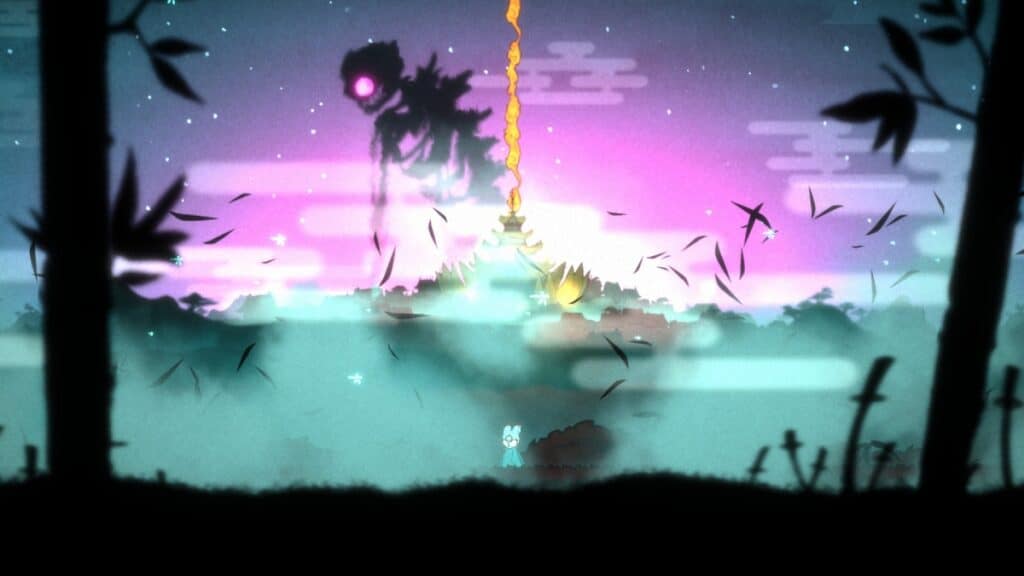
Initially, Bō: Path of the Teal Lotus doesn’t explain its story well. It begins with a Blasphemous-like structure, where you only follow a few breadcrumbs into ambiguity. You’re a celestial blossom or a tentaihana who’s been called from the heavens to fulfill a purpose. At first, this purpose is a mystery. You are just following the advice of a two-headed fourth-wall-breaking bird and another tentaihana called Asahi. As you progress through many of the game’s dangerous yet colorful zones, the mystery behind your calling unveils, albeit at a slow pace.
That’s not to say the game stays ambiguous at all times. While there are a lot of clues here and there about what’s happening, the stakes get higher as you progress, and everything starts to make sense. And while the main story is great and might even shock a few, I enjoyed some side quests more. You have a group of sumo-enjoying Kabutos hosting a tournament way up in the mountains. A dragon in charge of the city’s archives wants someone to open the way into the forbidden section of the library again. These characters left me a bigger impression than the main quest itself. Again, it isn’t bad, but due to the ambiguity, it can be hard to get attached to it.
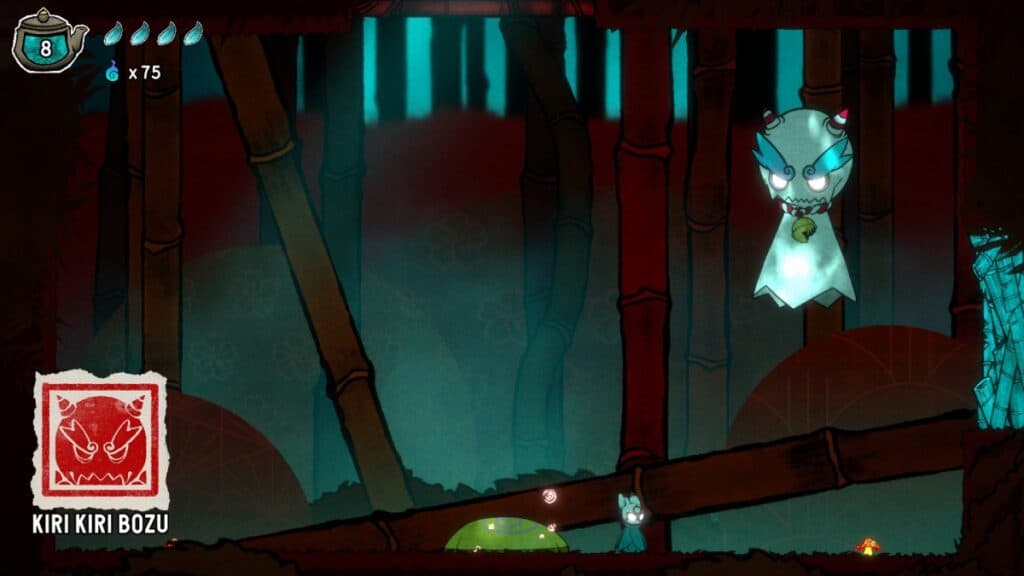
On the other hand, the developers’ excellent combination of Japanese folklore and modern dialogue was a marvel to watch. For example, one of the early bosses is Hashihime. For the unaware, she is usually depicted as a demon in Japanese folklore born out of jealousy. Throughout the fight, this demon shifts from a destructive personality to one of a centennial who’s throwing a tantrum. The same can be said for many other characters, with my absolute favorite ones being the two-headed bird who makes fun of some of the gaming industry’s staples by subtly breaking the fourth wall.
A Tentaihana’s Size Doesn’t Matter
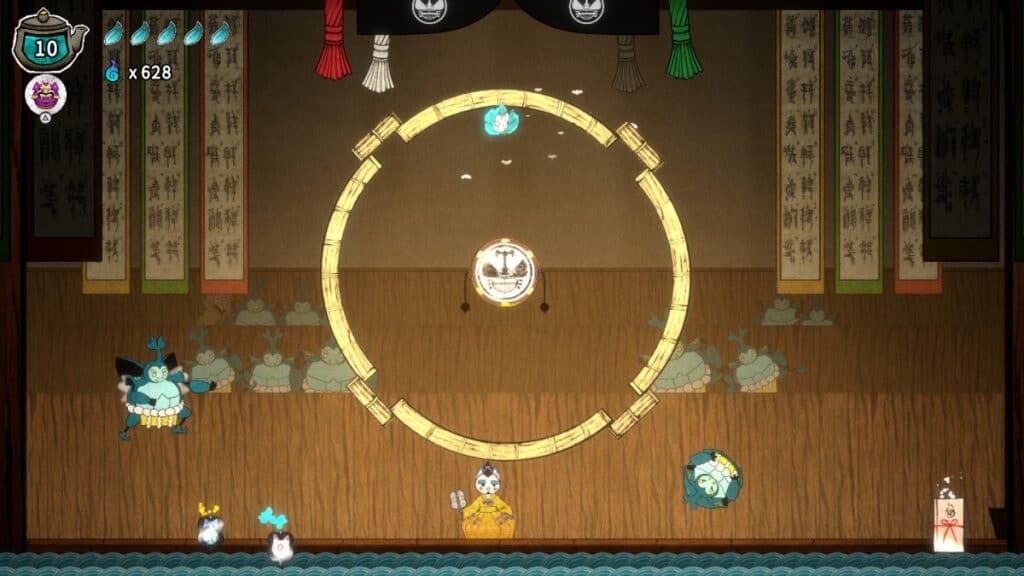
Despite being almost the size of a flower bud, our playable character packs a punch. In general terms, Bō: Path of the Teal Lotus has all the staples of a true Metroidvania. You have your attacks that go off in the direction you point your stick, plus many platforming puzzles and challenging enemies. However, what makes Path of the Teal Lotus stand out is how it presents each element and allows players to overcome them.
For instance, this game relies a lot on aerial combat. You’ll notice that attacking while on the ground is slow. However, if you go aerial when fighting and perform acrobatic strikes, you’ll notice how fast you attack and how easy it is to beat enemies. The mechanic is even more important as the more airtime you get, the more powerful some of your skills get. Speaking of which, most of your skills can be divided into exploration and combat. The former are obtainable through questing and progressing through the main story. These abilities will transform your bo staff into something that’ll let you reach new areas, such as a grappling hook of sorts and wings that let you glide.
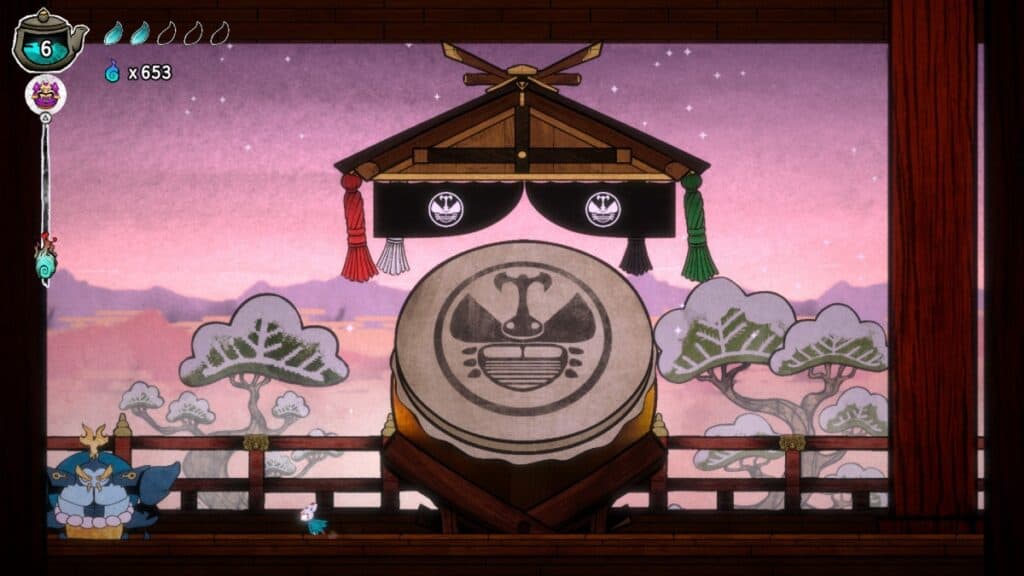
Regarding combat, most of your skills will come from Daruma, some of Japan’s traditional dolls. All Daruma will provide you with certain skills you can activate once your tea kettle has enough charges. Some will allow you to spit fire, while others will grant you a shield when fighting. Despite their abilities, I rarely used them, but that’s on me. I preferred the aerial combat instead of mixing up Daruma skills when fighting. In truth, I focused on the one that granted a shield and upgraded because I preferred the addictive acrobatic combat the game has.
Previously, I mentioned a tea kettle, which is one of the best and most creative mechanics I’ve seen. Instead of having health-restoring potions, you have your tea kettle. At first, it can hold a few charges that you’ll use to activate your Daruma or, most importantly, heal yourself. Healing one life point requires five charges, which you can accumulate by hitting enemies. I found this extremely useful and accessible as the game rewards you after approaching exploration aggressively. Don’t have enough charges? Beat a few enemies up to restore health. Have you already used everything inside your kettle during a fight? Keep smacking the boss until your kettle fills up again. While it might seem a small detail, I feel it is a crucial feature that makes the game accessible without taking away the challenge or becoming punishing.
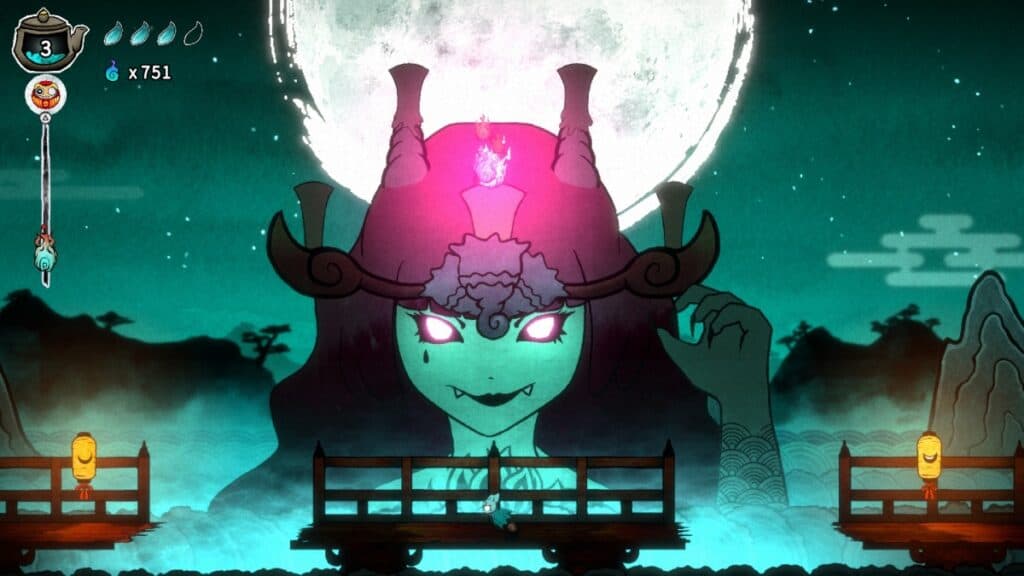
Lastly, I felt Bō: Path of the Teal Lotus was extremely good for anyone who has never played a Metroidvania game. On many occasions, players tend to avoid this genre the same way they avoid a soulslike. I don’t blame them. However, you shouldn’t run away from this one just because it is challenging. It’ll kick your butt many times, yes, but it won’t punish you for it. There are so many checkpoints that I never felt stressed when returning to the place where I died for the tenth time. Furthermore, it never overwhelms you with enemies just for the sake of it. Each area is carefully crafted to provide a challenge that you can overcome after a few attempts. And even if you die constantly, the stages aren’t too long to make you feel burnt out.
Folkloric Beauty
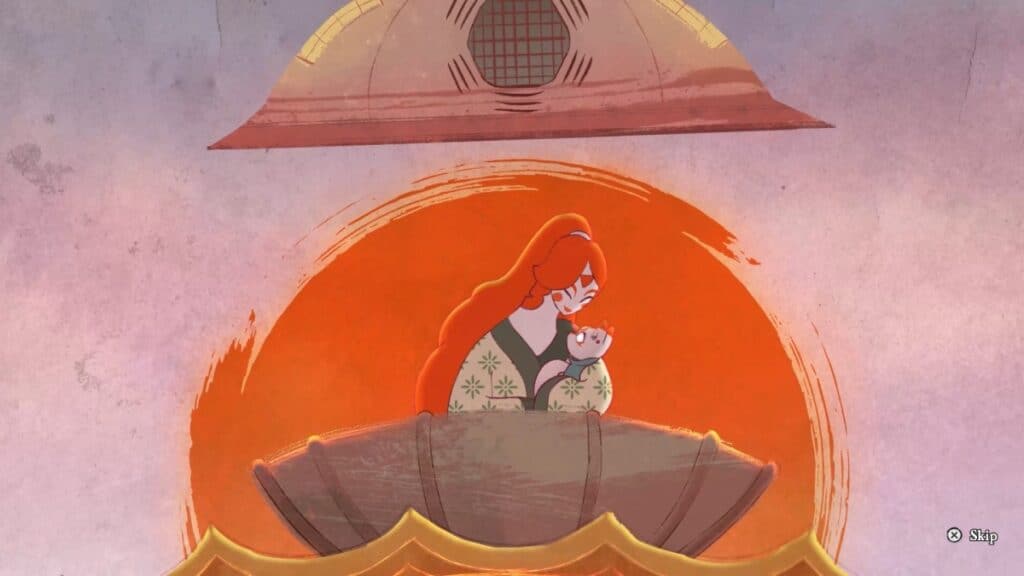
The best thing about Bō: Path of the Teal Lotus is its art style. This 2.5D side-scrolling adventure is one of the most breathtaking I’ve experienced. From its opening scene, which was carefully animated and colored, to the first time you step into the Crimson Bamboo Forest and beyond, everything is a delight to see. Even the scariest areas of the game are so unique and beautiful that they’ll stick in your mind after you leave for greener pastures.
Another commendable thing is the character design. Since many come from Japan’s folklore, you might expect a few scary creatures here and there. That isn’t the case. Every inhabitant has such a memorable and beautiful style that evokes this cartoonish feel but doesn’t reach an “I’ve seen it before level.” Everything remains original as you play. But more importantly, it blends perfectly into the world you’re exploring. Bō: Path of the Teal Lotus has such an organic art style that creates excitement for the next zone you’re delving into. Even when there were tougher enemies to face, I couldn’t help but stop for a while and just take every color and every element in.
On the other hand, the audio is great, but I didn’t find it as memorable as the imagery. While the sound effects are fantastic, such as Bo serving tea or the staff making a different sound depending on the enemy you hit, the music felt more like background noise. Not in a bad way, though. Due to the inspiration behind the game, you can expect many Japanese traditional instruments. Most tracks include strings that resemble a Shamisen, and many flute tunes accompany these melodies. While the variations in music are great, as they shift from calm to frenetic during a fight, I felt the art style overshadowed it all. And that’s not a bad thing to say.
An Artful Metroidvania

Bō: Path of the Teal Lotus is a work of art in many ways. Beyond its gorgeous visuals and iconic design, how it weaves so many gameplay elements into something organic is nothing short of greatness. As someone who isn’t an expert, I can tell you it is a game that balances challenge and accessibility perfectly. I never felt annoyed when returning to a place or after meeting my demise several times. The combat is so smooth that I wish I had more enemies to put my skills to the test.
Even if the backtracking made me feel like a ping-pong ball bouncing from one extreme to another, it never deterred me from playing. On the contrary, I always wanted to discover more. With so many engaging exploration skills and customizable abilities, the way you approach this mythical road is up to you. And even if you’re new to the whole Metroidvania world, you’ll find a new home in this game.
Review copy provided by Publisher.
Bō: Path of the Teal Lotus (PC Reviewed)
Bō: Path of the Teal Lotus is one of the most unique and memorable Metroidvanias of the past decade. Mixing engaging and challenging combat while maintaining an accessible difficulty level will attract many players to this delightful world.
Pros
- Gorgeous visual style
- A fantastic blend of Japanese folklore with modern humor
- Engaging combat that rewards an aggressive approach
Cons
- Not enough enemies to put one's skills to the test
- The plot can be extremely ambiguous during its opening hours





